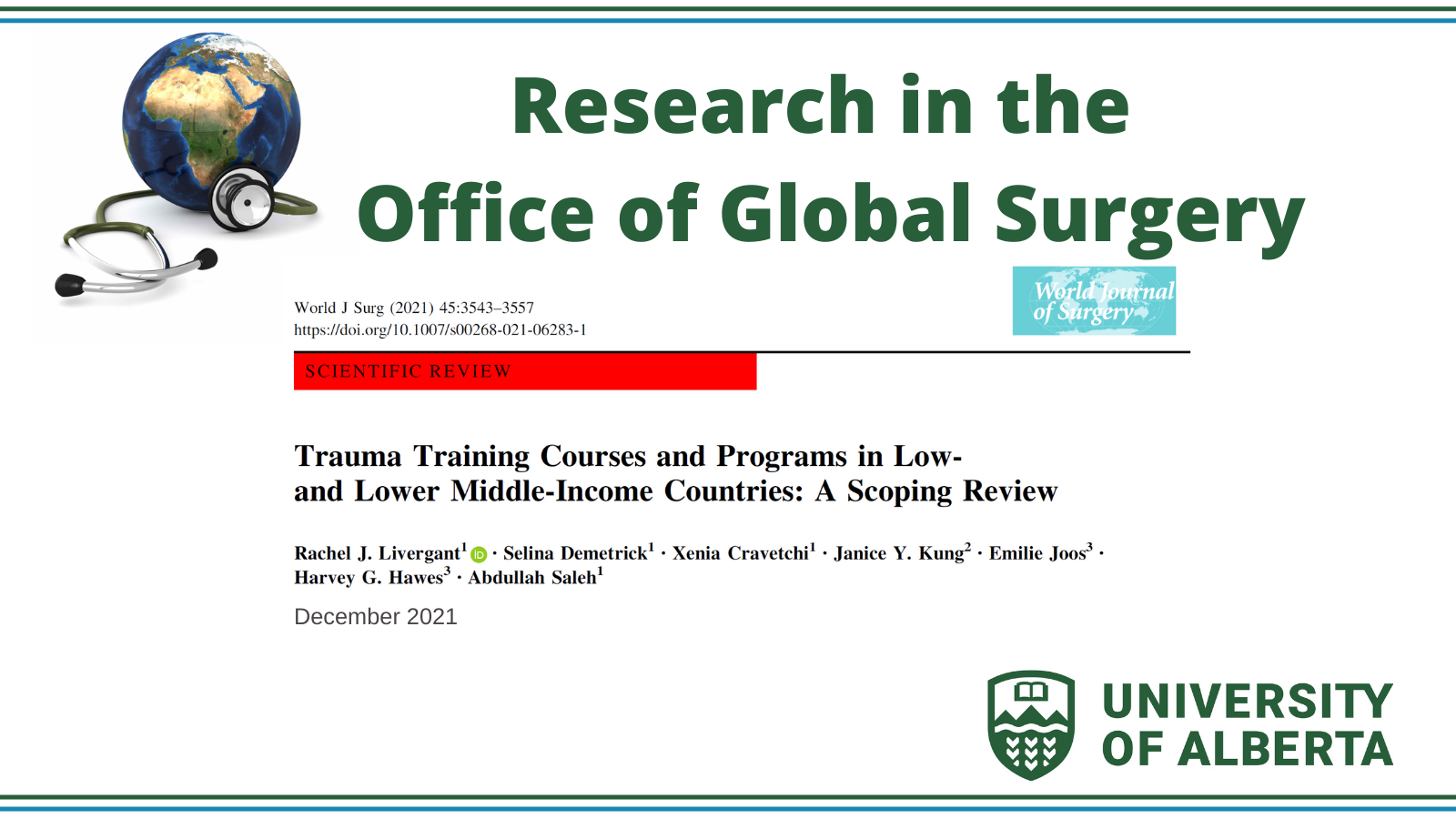Trauma Training Courses and Programs: A Scoping Review

Trauma Training Courses and Programs in Low- and Lower Middle-Income Countries: A Scoping Review
Injury or trauma is the leading cause of death in low- and lower middle-income countries (LMIC). If implemented effectively, trauma training programs can improve injury outcomes. Through a scoping review, Livergant, Demetrick, Cravetchi, et al, have provided recommendations to improve how training programs are delivered to improve trauma care. Livergant, the lead author, is a third year medical student at the University of Alberta and former research assistant with the Office of Global Surgery at the University of Alberta. This is her second first author publication. See abstract below for more details or click here for the full publication.
Abstract
Background- Injury is the leading cause of morbidity and mortality in low- and lower middle-income countries (LMICs). Trauma training is a cost-effective way to improve injury outcomes. Several trauma programs have been implemented in LMICs; however, their scope and effectiveness remain unclear. In this review, we sought to describe and assess the current state of trauma training in LMICs.
Methods- We searched MEDLINE, Embase, Global Health, Cochrane Library, and ProQuest Dissertations & Theses Global for trauma training courses in LMICs. An additional gray literature search was conducted on university, governmental, and non- governmental organizations’ websites to identify trauma-related postgraduate medical education (PGME) opportunities.
Results- Most studies occurred in sub-Saharan Africa and participants were primarily physicians/surgeons, medical students/residents, and nurses. General and surgical trauma management courses were most common, followed by orthopedic trauma or plastic surgery trauma/burn care courses. 32/45 studies reported on participant knowledge and skills, 27 of which had minimal follow-up. Of the four studies commenting on cost of courses, only one demonstrated cost-effectiveness. Three articles evaluated post-course effects on patient outcomes, two of which failed to demonstrate significant improvements. Overall, 43.0% of LMICs have PGME programs with defined trauma competency requirements.
Conclusions- Current studies on trauma training in LMICs do not clearly demonstrate sustainability, cost-effectiveness, nor improved outcomes. Trauma training programs should be in response to a need, championed locally, and work within a cohesive system to demonstrate concrete benefits. We recommend standardized and contextualized trauma training with recertifications in LMICs for lasting and improved trauma care.